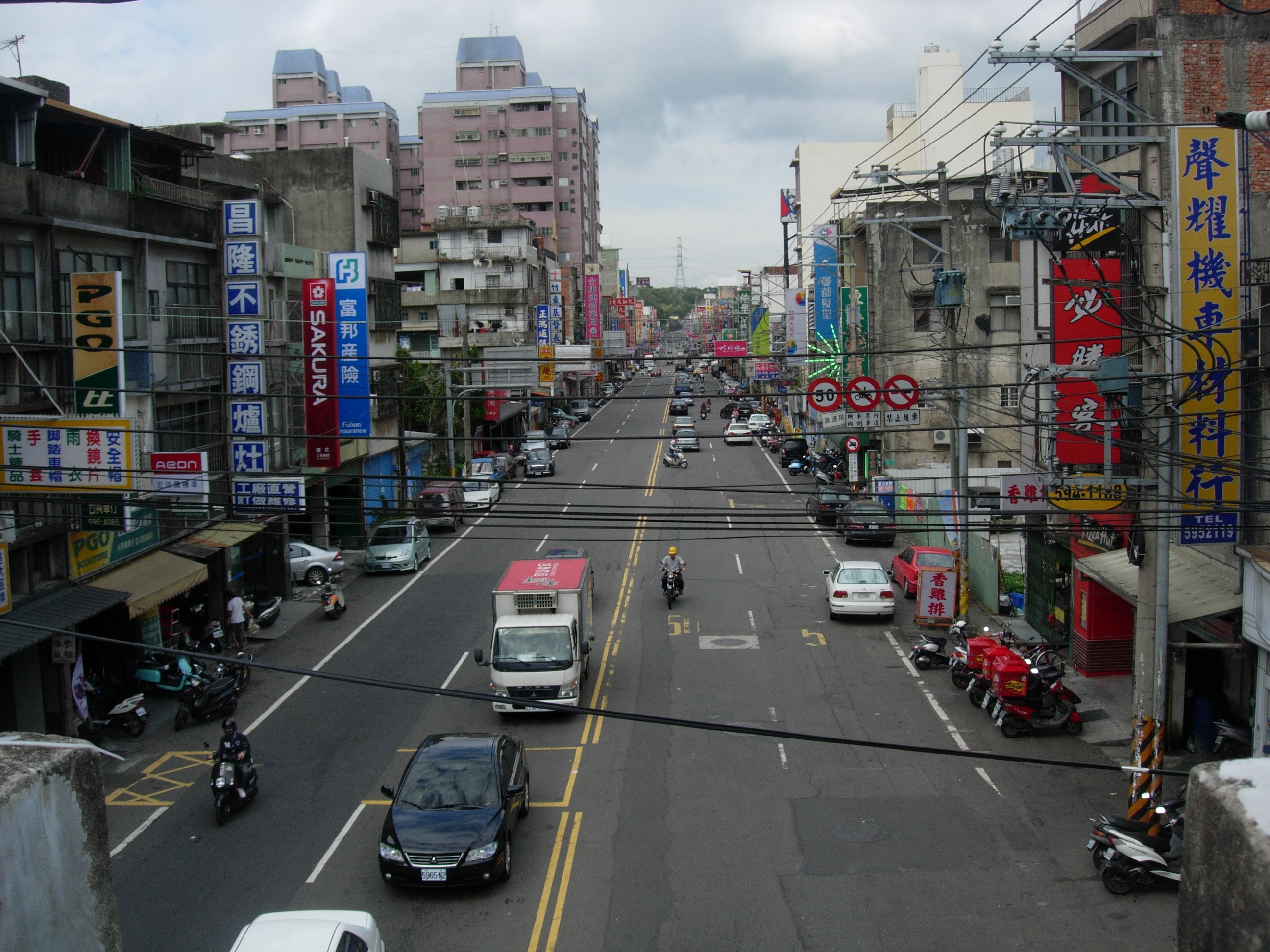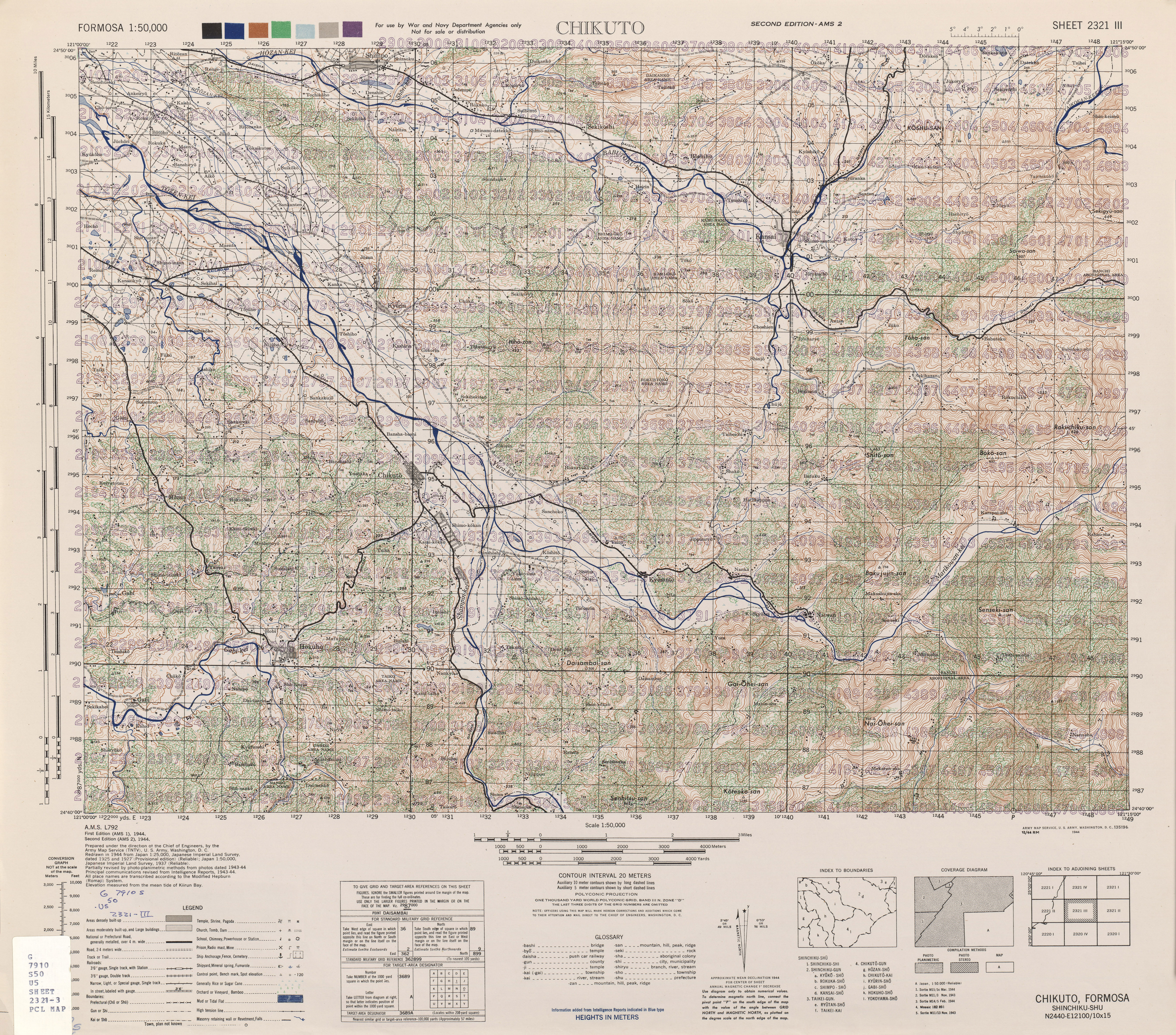|
Baoshan, Hsinchu
Baoshan Township () is a rural township in Hsinchu County, Taiwan. It is ostensibly a suburb of Hsinchu City to the north and west, and is also bounded by Zhudong City to the east, Beipu and Emei Towns to the south, and Miaoli County to the west. Name The name Baoshan means "Treasure Mountain" in Mandarin Chinese. History Baoshan was formerly known as "Caoshan", which was named after the ancestors of the Han nationality in the Qing Dynasty because of the overgrown hills and weeds in the area. In 1946 Baoshan and Zhudong townships were merged into Hsinchu City, but in 1950 when Hsinchu was reduced to a county-administered city, Baoshan and Zhudong returned to a township. Geography The town is populated predominantly by people of Hakka ethnicity, and is part of "the Greater Daai Area -- the largest Hakka area in northern Taiwan" along with Beipu and EmeiHowever, recent suburbanization has probably led to a large increase in the proportion of non-Hakka people due to its prox ... [...More Info...] [...Related Items...] OR: [Wikipedia] [Google] [Baidu] |
Township (Taiwan)
Townships are the third-level administrative subdivisions of counties of the Republic of China (Taiwan), along with county-administered cities. After World War II, the townships were established from the following conversions on the Japanese administrative divisions: Although local laws do not enforce strict standards for classifying them, generally urban townships have a larger population and more business and industry than rural townships, but not to the extent of county-administered cities. Under townships, there is still the village as the fourth or basic level of administration. As of 2022, there are totally 184 townships, including 38 urban townships, 122 rural townships and 24 mountain indigenous townships. 174 townships with 35 urban and 118 rural townships are located in Taiwan Province and 10 townships with 3 urban and 4 rural townships are located in Fujian Province. Penghu and Lienchiang are the only two counties that do not have urban townships. Statist ... [...More Info...] [...Related Items...] OR: [Wikipedia] [Google] [Baidu] |
Hakka People
The Hakka (), sometimes also referred to as Hakka Han, or Hakka Chinese, or Hakkas are a Han Chinese subgroup whose ancestral homes are chiefly in the Hakka-speaking provincial areas of Guangdong, Fujian, Jiangxi, Guangxi, Sichuan, Hunan, Zhejiang, Hainan, Guizhou in China, as well as in Taoyuan City, Hsinchu County, Miaoli County, Pingtung County, and Kaohsiung City in Taiwan. The Chinese characters for ''Hakka'' () literally mean "guest families". Unlike other Han Chinese subgroups, the Hakkas are not named after a geographical region, e.g. a province, county or city, in China. The word ''Hakka'' or "guest families" is Cantonese in origin and originally refers to the Northern Chinese refugees fleeing social unrest, upheaval and invasions in northern parts of China (such as Gansu and Henan) during the Qin dynasty who then seek refuge in the Cantonese provinces such as Guangdong and Guangxi, thus the original meaning of the word implies that they are guests living in the ... [...More Info...] [...Related Items...] OR: [Wikipedia] [Google] [Baidu] |
Interchange (road)
In the field of road transport, an interchange (American English) or a grade-separated junction (British English) is a road junction that uses grade separations to allow for the movement of traffic between two or more roadways or highways, using a system of interconnecting roadways to permit traffic on at least one of the routes to pass through the junction without interruption from crossing traffic streams. It differs from a standard intersection, where roads cross at grade. Interchanges are almost always used when at least one road is a controlled-access highway (freeway or motorway) or a limited-access divided highway (expressway), though they are sometimes used at junctions between surface streets. Terminology ''Note:'' The descriptions of interchanges apply to countries where vehicles drive on the right side of the road. For left-side driving, the layout of junctions is mirrored. Both North American (NA) and British (UK) terminology is included. ; Freeway junctio ... [...More Info...] [...Related Items...] OR: [Wikipedia] [Google] [Baidu] |
Baoshan Second Dam
The Baoshan Second Dam () is a dam in Baoshan Township, Hsinchu County, Taiwan. History In 1986, the planning team of Water Resources Bureau of the Taiwan Provincial Government conducted preliminary study for a dam exploration to alleviate water scarcity problem in Hsinchu County in the future. In 1989, the initial planning to construct the dam began and the feasibility study started in 1993. In 1995, the Project Plan for the Second Baoshan Reservoir in Hsinchu County was proposed. The construction began in April 1997 and completed in June 2006. In 2020, the government announced that it would increase the height of the dam to increase the total water supply of Taiwan. Technical specifications The dam is an embankment type of dam. It spans over 58 meters high, 350 meters long with a volume of 2,052,000 m3. It produces a reservoir with a catchment area of 2.88 km2, full water level area of 1.93 km2 and a maximum depth of 151.73 meters. It has a total capacity of 31,900,000 m3 wi ... [...More Info...] [...Related Items...] OR: [Wikipedia] [Google] [Baidu] |
Baoshan Dam
The Baoshan Dam () is a dam located in Baoshan Township, Hsinchu County, Taiwan. The dam supplies water to Hsinchu City and cooling water to factories in Hsinchu Science and Industrial Park. History The dam was initially constructed in 1981 and completed in 1984. Technical specifications The reservoir has an effective capacity of 5,380,000 m3. Transportation The dam is accessible south of Shangyuan Station of Taiwan Railways. See also * List of dams and reservoirs in Taiwan This is a partial listing of dams and reservoirs in Taiwan (Republic of China). List of dams and reservoirs See also * List of power stations in Taiwan References * Reservoirs, dams and weirs of Taiwan(Taiwan Water Resources Agency ... * Baoshan Second Dam References 1984 establishments in Taiwan Buildings and structures in Hsinchu County Dams completed in 1984 Dams in Taiwan {{Taiwan-dam-stub ... [...More Info...] [...Related Items...] OR: [Wikipedia] [Google] [Baidu] |
Hsinchu Science Park
The Hsinchu Science Park (HSP; ) is an industrial park established by the government of Taiwan on 15 December 1980. It straddles Hsinchu City and Hsinchu County in Taiwan. History The idea of the establishment of the Hsinchu Science Park was first proposed by Shu Shien-Siu, the former President of National Tsing Hua University and Minister of Science and Technology. After Shu became the Minister of Science and Technology in 1973, he traveled to the United States, Europe, and Japan to learn and study their conditions of the development of science and technology. In 1976, Shu came up with the idea of building a science and technology park like that of Silicon Valley. President Chiang Ching-kuo proposed to build the park in Longtan District because of the potential future benefits that could be drawn from National Chung-Shan Institute of Science and Technology and the military. However, Shu argued that the technology and science park should not be close to the military as the pri ... [...More Info...] [...Related Items...] OR: [Wikipedia] [Google] [Baidu] |
Taiwanese People
Taiwanese people may be generally considered the people of Taiwan who share a common culture, ancestry and speak Taiwanese Mandarin, Hokkien, Hakka or indigenous Taiwanese languages as a mother tongue. Taiwanese people may also refer to the indigenous peoples of the areas under the control of the Government of the Republic of China since 1945, including Penghu as well as Kinmen and Matsu Islands that collectively form its streamlined Fujian Province (see Taiwan Area). However, the inhabitants of Kinmen and the Matsu themselves may not consider the "Taiwanese" label to be accurate as they are a part of Fujian and not Taiwan. They have a distinctive identity from that of the Taiwanese; viewing themselves as Kinmenese or Matsunese, respectively, or as simply Chinese. At least three competing (occasionally overlapping) paradigms are used to identify someone as a Taiwanese person: nationalist criteria, self-identification (including the concept of "New Taiwanese") criteria and ... [...More Info...] [...Related Items...] OR: [Wikipedia] [Google] [Baidu] |
Southern Min
Southern Min (), Minnan (Mandarin pronunciation: ) or Banlam (), is a group of linguistically similar and historically related Sinitic languages that form a branch of Min Chinese spoken in Fujian (especially the Minnan region), most of Taiwan (many citizens are descendants of settlers from Fujian), Eastern Guangdong, Hainan, and Southern Zhejiang. The Minnan dialects are also spoken by descendants of emigrants from these areas in diaspora, most notably the Philippines, Indonesia, Malaysia, Singapore, San Francisco, Los Angeles and New York City. It is the most populous branch of Min Chinese, spoken by an estimated 48 million people in c. 2017–2018. In common parlance and in the narrower sense, Southern Min refers to the Quanzhang or Hokkien-Taiwanese variety of Southern Min originating from Southern Fujian in Mainland China. This is spoken mainly in Fujian, Taiwan, as well as certain parts of Southeast Asia. The Quanzhang variety is often called simply "Minnan Proper". It ... [...More Info...] [...Related Items...] OR: [Wikipedia] [Google] [Baidu] |
County-administered City
A county-administered city is a unit of administrative divisions of Taiwan, administrative division in Taiwan. Under the administrative structure of Taiwan, it is at the same level as a township (Taiwan), township or a district (Taiwan), district. Such cities are under the jurisdiction of county (Taiwan), counties. It is also the lowest-level city of Taiwan, below a provincial city (Taiwan), city and a special municipality (Taiwan), special municipality. There are 14 county-administered cities currently. History The first administrative divisions entitled "city" were established in the 1920s when Taiwan was Taiwan under Japanese rule, under Japanese rule. At this time cities were under the jurisdiction of prefectures of Japan, prefectures. After the World War II, nine (9) out of eleven (11) Cities of Japan, prefectural cities established by the Japanese government were reorganized into provincial cities based on the ''Laws on the City Formation'' (). However, the populations of ... [...More Info...] [...Related Items...] OR: [Wikipedia] [Google] [Baidu] |
Hsinchu County
Hsinchu County ( Wade–Giles: ''Hsin¹-chu²'') is a county in north-western Taiwan. The population of the county is mainly Hakka; with a Taiwanese aboriginal minority in the southeastern part of the county. Zhubei is the county capital, where the government office and county office is located. A portion of the Hsinchu Science Park is located in Hsinchu County. History Early history Before the arrival of the Han Chinese, the Hsinchu area was home to the indigenous Taokas, Saisiyat, and Atayal. After the Spanish occupied northern Taiwan, Catholic missionaries arrived at Tek-kham in 1626. Minnanese ( Hoklo) and Hakka came and began to cultivate the land from the plains near the sea towards the river valleys and hills. Qing dynasty In 1684, Zhuluo County was established during Qing dynasty rule and more Han settled near Tek-kham. A Chinese city was established there in 1711 and renamed Hsinchu in 1875. It became part of Taipeh Prefecture. In the late 19th century, ... [...More Info...] [...Related Items...] OR: [Wikipedia] [Google] [Baidu] |
Zhudong, Hsinchu
Zhudong Township is an urban township in central Hsinchu County, Taiwan. Part of Hsinchu Science Park is in Zhudong. Also located in Zhudong is the main campus of the Industrial Technology Research Institute (ITRI). Zhudong is approximately 20 minutes drive from Hsinchu town center on one of two freeways, route 3 North, which passes nearby and route 68 East which proceeds directly through Zhudong. Name Literally, ''Zhudong'' means "bamboo east" but in this context, ''zhu'' is short for "Hsinchu". Thus, Zhudong lies east of Hsinchu (''cf.'' Zhubei which lies north 'bei''of Hsinchu.) The former name of the area was ''Chhiū-kí-nâ'' (), literally "' forest" with the present name adopted under Japanese rule in 1920. Geography * Area: * Population: 96,831 (January 2017) Administrative divisions Shangping, Ruifeng, Ruanqiao, Yuandong, Shangguan, Dongning, Zhongzheng, Daxiang, Zhongshan, Nanhua, Donghua, Shanghua, Jilin, Renai, Zhudong, Zhongxiao, Rongle, Ronghua, Wufeng, ... [...More Info...] [...Related Items...] OR: [Wikipedia] [Google] [Baidu] |
Miaoli County
Miaoli County (Mandarin Pinyin: ''miáo lì xiàn''; Hakka PFS: ''Mèu-li̍t-yen''; Hokkien POJ: ''Biâu-le̍k-koān'' or ''Miâu-le̍k-koān'') is a county in western Taiwan. Miaoli is adjacent with Hsinchu County and Hsinchu City to the north, Taichung to the south, and borders the Taiwan Strait to the west. Miaoli is classified as a county in central Taiwan by the National Development Council, while the Taiwan Central Weather Bureau classifies Miaoli as a county in northern Taiwan. Miaoli City is the capital of the county, and is also known as "Mountain Town", owing to the number of mountains nearby, making it a destination for hiking. Name The name ''Miaoli'' was coined by matching Hakka Chinese sound for the characters 貓貍 to the phonetically approximate ''Pali'' (''Bari'') from the Taokas language. The resulting word () is a widespread but non-orthodox variant referring to Viverridae. In 1889, during late Qing rule, the name was modified from various forms ... [...More Info...] [...Related Items...] OR: [Wikipedia] [Google] [Baidu] |





